How to Substitute Isinglass (Fish Glue): Plant-Based Alternatives to Try
Gelatin is essential for giving structure to a compound. In the kitchen there are several non-animal products that give the most suitable consistency to preparations, from puddings to creams, making them more fluid or more solid depending on the recipe.
;Resize,width=742;)
Among the aspects that play an important role in cooking is that of giving the right consistency to preparations: a significant detail that affects the final result. Among the most used ingredients capable of giving structure to a recipe is isinglass (or fish glue), used above all in puddings, mousses, cheesecakes, bavarois and semifreddos with the function of firming a compound that would otherwise be too liquid. It is a dried gelatine, easily found in sheets, which is obtained in most cases from the connective tissue of cattle and pigs, despite the name referring to a past technique that involved the treatment of the swim bladder of fish. Precisely because of its animal origin, it may be necessary to replace it, using plant products in its place. Fortunately, there is no shortage of alternatives on the market: below, we will see what they are and how to use them.
Vegetable Thickeners and Gelling Agents: What They Are and The Differences
Vegetable thickeners and gelling agents are natural ingredients used in cooking and in the food industry as additives to modify the consistency of a food or a liquid or semi-liquid preparation. They often have both the ability to thicken and to gel depending on the quantities used, although there are products that are better suited to one function than the other: in the first case we refer to foods that increase the viscosity of the compound, mainly used in sauces, gravies, creams, veloutés, soups, while the others make it solid or semi-solid, for example in spoon desserts such as bavarois and mousse, cheesecake, but also aspic, jelly and jams.
What Are Vegetable Thickeners and How Are They Used?
Commonly found in our pantries, thickeners are distinguished by their different characteristics, performing a more powerful or milder action: their use depends on the recipe we want to try.
1. Wheat Flour
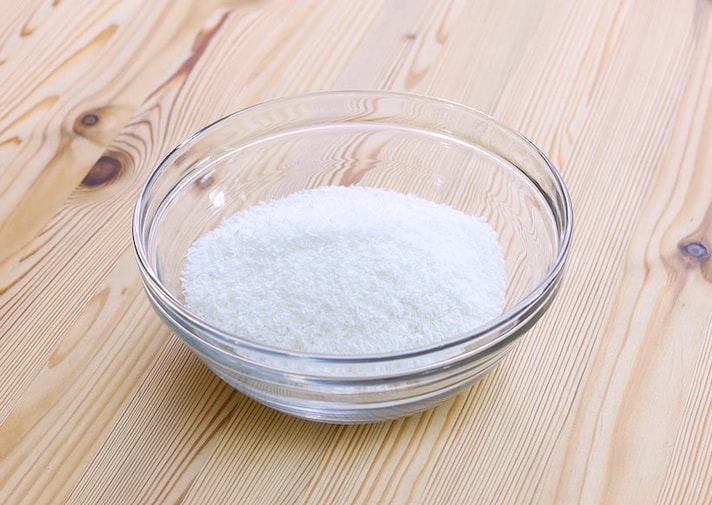
Let's start with one of the simplest to use, the classic white soft wheat flour that appears in sauces, cooking creams, soups and broths. Among the most famous recipes is undoubtedly that of béchamel, where it is the protagonist of the roux: the result is a soft compound, which remains fluid when hot and tends to compact during cooling. Pay attention to the flavor: if dosed in excess or undercooked it stands out in terms of flavor. Postscript: another type used because it gives creaminess is carob seed flour, a thickener – but also gelling agent – among the most appreciated for making homemade ice cream, as it has a high power of absorbing liquids.
2. Corn Starch

A valid substitute for the previous one is corn starch, also known as maize starch. Thanks to an almost total supply of starches compared to flour, which is more protein-rich, it is a more effective thickener, which also has the advantage of having a neutral flavor. Green light for creams (above all custard), puddings, broths, cooking bases and spoon desserts with a smooth and silky consistency: it is used above all dissolved in water or hot milk and then slowly added to the mixture. It is easily found on the market as a white powder, obtained from the corn kernel, therefore naturally gluten-free: from this point of view, rice starch is a close relative, also to be taken into consideration.
3. Potato Starch
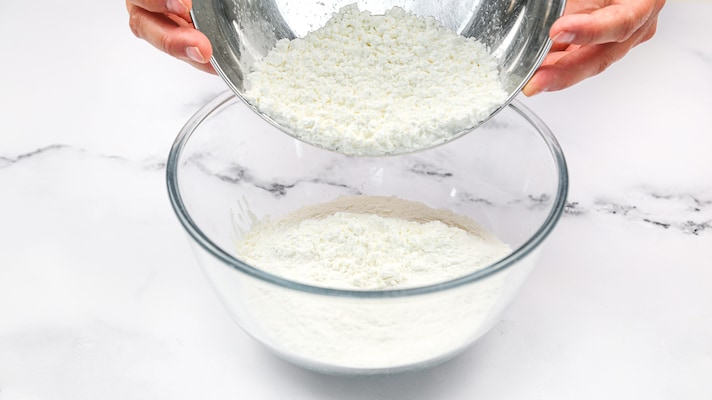
Comparable to corn starch in behavior and appearance (fine powder), it is the starch that is extracted from potatoes. It gives a softer consistency to cake and pie doughs, and as a thickener it has a good performance at low temperatures compared to other starches, activating around 150°F/65°C: it is an excellent ally for lightly thickening soups, creams and gnocchi doughs. It tends to prolong its function even when cold, so you should not use too much or the risk is that of an effect that is too sticky.
4. Gum Arabic
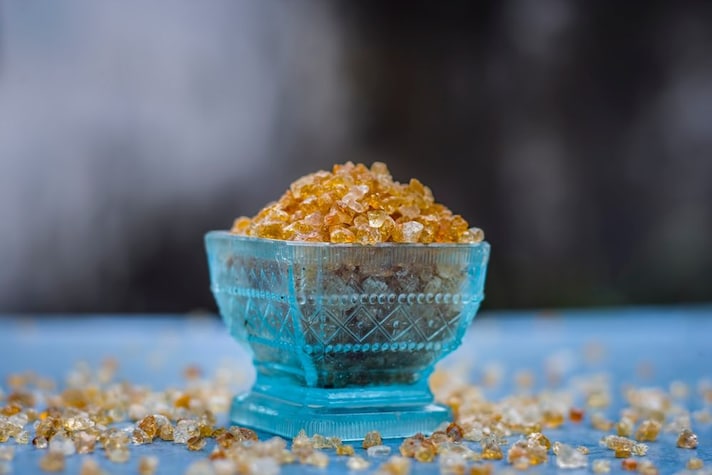
Less popular at home, but widely used in the food industry, gum arabic is also of natural origin as it comes from some species of acacia. It is a very versatile product, highly soluble in water, used mainly as an additive and is useful for many purposes: it thickens drinks, syrups and icings, delays or prevents the crystallization of sugars in sweets and emulsifies compounds. Depending on the quantity, it also performs a gelling and solidifying function. It is found in the form of a fine, white-beige powder or in ready-to-use solutions.
5. Xanthan
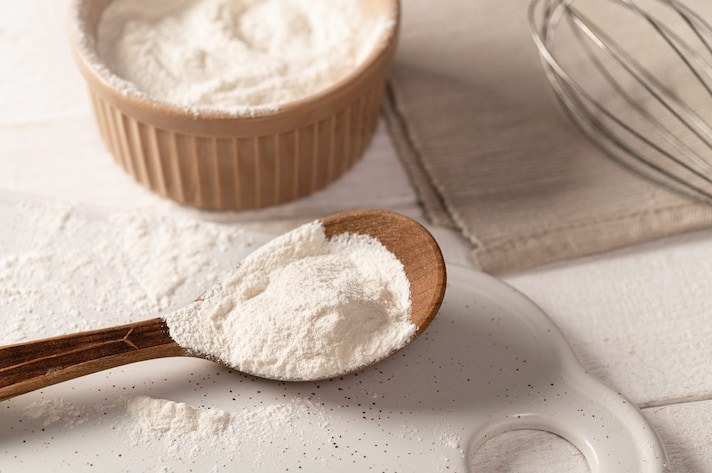
Staying within the “gum” category, xanthan gum makes its appearance. It is purchased in powder form and a few grams are enough to thicken creams, sauces, gravies, but also to give more structure to pizza, bread, focaccia and fresh pasta doughs, especially those without gluten. Furthermore, it makes preparations such as mayonnaise, pudding and meringue stable. What is it? A polysaccharide identifiable with the acronym E415, the result of a fermentation process via natural strains of the bacterium Xanthomonas campestris, from which it takes its name. It is recommended not to overdo it due to its laxative properties.
The Main Vegetable Gelling Agents and How to Use Them
Compared to thickeners, gelling agents are chosen to give preparations a more solid, elastic and, as the term suggests, gelatinous consistency. Here are the most popular ones.
1. Agar Agar
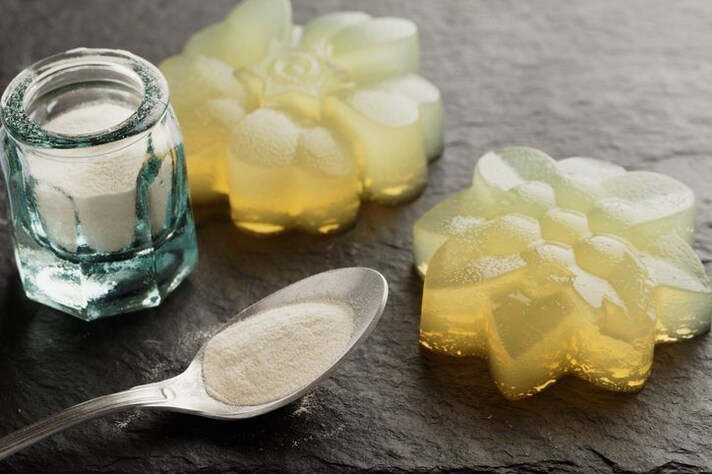
This is one of the main ingredients of vegan and vegetarian cuisine, probably the alternative par excellence to gelatine. Agar agar, derived from the processing of some types of red algae, is odorless and tasteless. Its high thickening power is activated around 195°F/90°C and solidifies as soon as it drops below 104-113°F/40-45°C. The gelatine obtained is thermoreversible, thus being able to melt and solidify several times, something that gelatine is not allowed to do. What is the conversion? Generally 5 g of powder correspond to one sheet.
2. Pectin
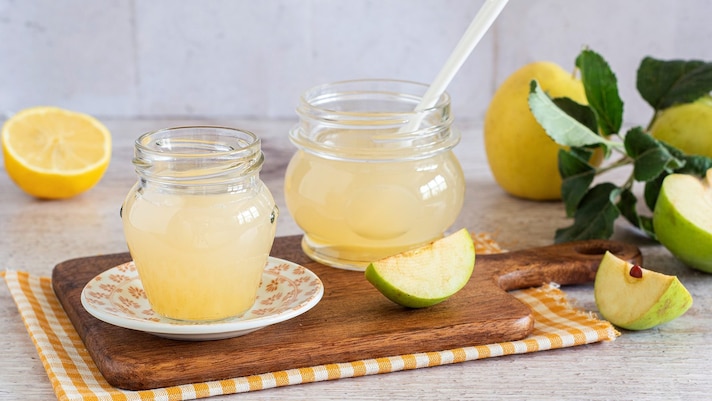
Pectin is one of the most famous natural gelling agents, extracted mainly from the peel of citrus fruits or from the pulp and peel of apples. It is widely used in the production of jams, preserves and fruit jellies, since its action is activated in the presence of sugar and an acidic environment (most often given by lemon juice), generally around 212°F/100°C. The more product is used, the more solid the consistency will be. As an additive it can also be present in products such as milk, yogurt, puddings and drinks.
3. Carrageenan

Carrageenan, another derivative of red algae, is mainly used in the food industry, but is also used in cooking as a thickener and gelling agent in puddings, ice creams, jams and preserves. There is not just one type: for example, Kappa carrageenan creates strong gels in reaction to milk proteins, while Iota carrageenan forms soft gels, indicated for giving pleasant consistencies to fruit-based products. Compared to agar agar, it is less easily found on the market for home use.
;Resize,width=767;)

;Resize,width=712;)
;Resize,width=712;)
